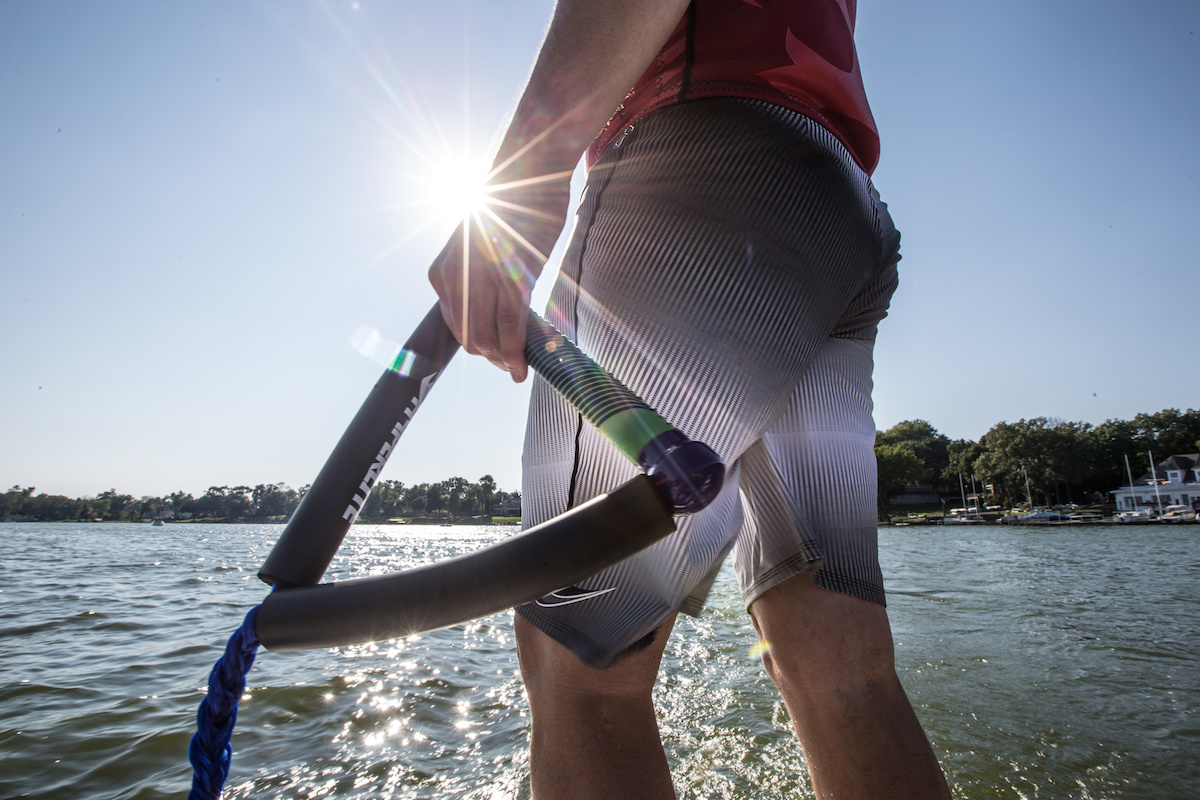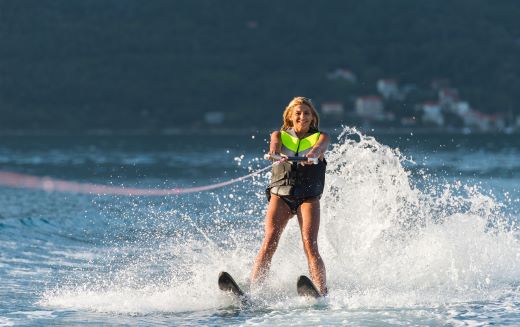Participating in watersports is one of the most enjoyable aspects of boating. Whether you prefer to waterski, ride an inflatable tube, wakeboard, or wake surf, these activities are a great way to bond with family and friends and make the most of your boating investment. As with all activities, however, safety should always come first.
Here are some essential safety tips and suggestions to help you enjoy any towable watersport.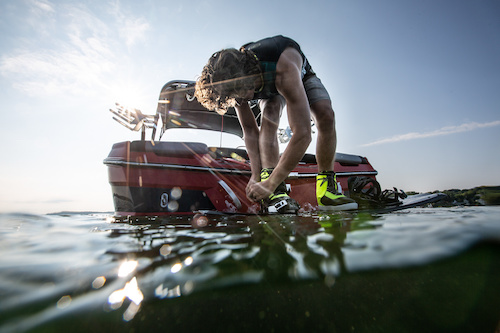
3 Tips for a Fun and Safe Watersports Experience
- Always Wear a Life Jacket: Whatever towable you choose, always wear a Coast Guard-approved life jacket.
A Type III vest-style life jacket is the best choice. Its body-hugging fit won’t restrict movement, while the broad torso coverage offers some impact protection in the event of a hard fall.
- Designate a Spotter: Always have a designated spotter aboard, a passenger whose sole task is to keep an eye on the person skiing or riding and communicate their needs to the driver.
- Learn and Use Basic Hand Signals: The spotter and participant should understand the meaning of basic watersports hand signals. These include a thumbs up or down to indicate a desire to go faster or slower, a pat atop the head to request a return to the dock, and both hands overhead with fingertips touching to signal the rider is OK following a fall.
4 Boat Driver-Specific Responsibilities in Watersports
As the driver, the safety of passengers and the skier or rider is your responsibility. Here are a few factors to keep in mind:
- Underway, maintain a safe distance from the shoreline, other boats sharing the water, and any obstacles.
- Focus on a safe path and the water ahead, letting the spotter keep track of the action behind.
- When returning to a downed skier, always keep that skier on the driver’s side to never lose sight of their position relative to the boat.
- Never let a skier or rider gear up on the swim platform, slip into the water, or re-board without first shutting off the engine.
Drivers should know the average speeds used in each activity and how strongly to pull a rider out of the water upon starting.
- Water skiers typically prefer between 25 to 36 MPH
- Wakeboarders 18 to 22 MPH
- Wakesurfers as little as 11 to 12 MPH
- Pull board riders more gradually from a deepwater start; skiing typically requires more aggressive acceleration, particularly with larger riders or those riding a single ski. And remember, never drive for watersports, or participate in them when under the influence of alcohol or drugs.
Read Next: How to Celebrate Safely On a Boat
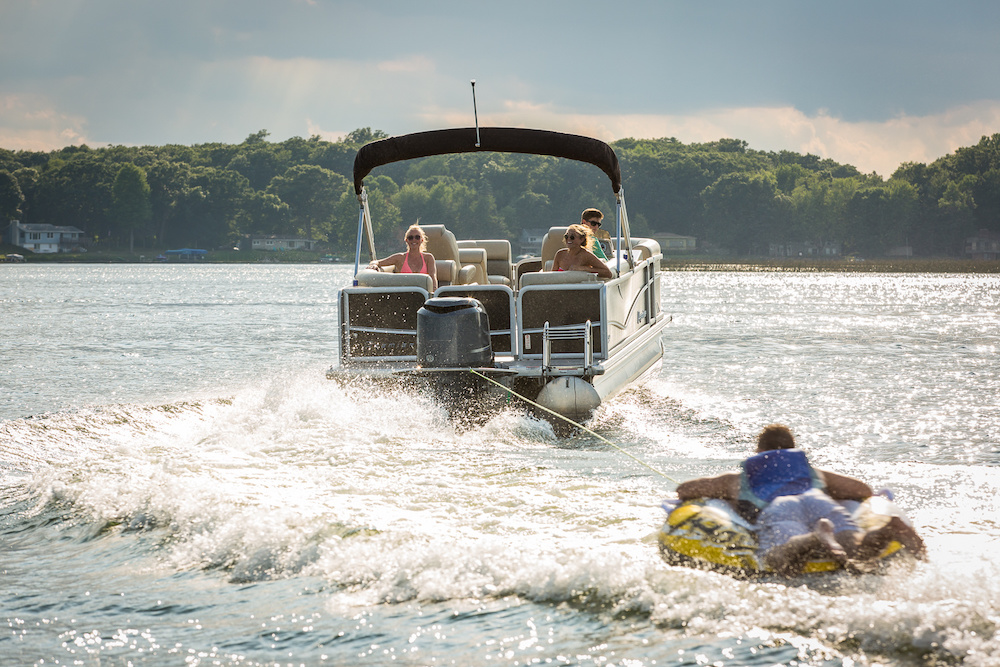
3 Boat Tubing Safety Tips
Inflatable tubes may seem like the simplest of towables, but they deserve additional attention.
- Always follow the manufacturer’s recommendations regarding the number of passengers and/or weight capacities. Overloading an inflatable will reduce its performance, but more importantly, it increases the risk of injury. Any towing speed limits should always be followed so that the inflatable behaves as intended.
- Proper inflation is essential, not only to make sure the inflatable rides properly on the water but also to keep passengers safe. Inflatables typically feature an inner air bladder wrapped in a durable nylon cover.
A correctly inflated tube will behave as one unit, while an under-inflated tube will leave gaps between the cover and bladder that could potentially entangle a rider(s). Inflatables should also always be used with dedicated towlines designed to handle their increased load.
- Take extra care when driving. Be aware that inflatables can reach surprisingly high speeds when slingshot into a sharp turn. Likewise, watch your boat’s and others’ wakes on the water.
For more safe tubing tips, read Boat Safety Tips for Watersports Tubing.
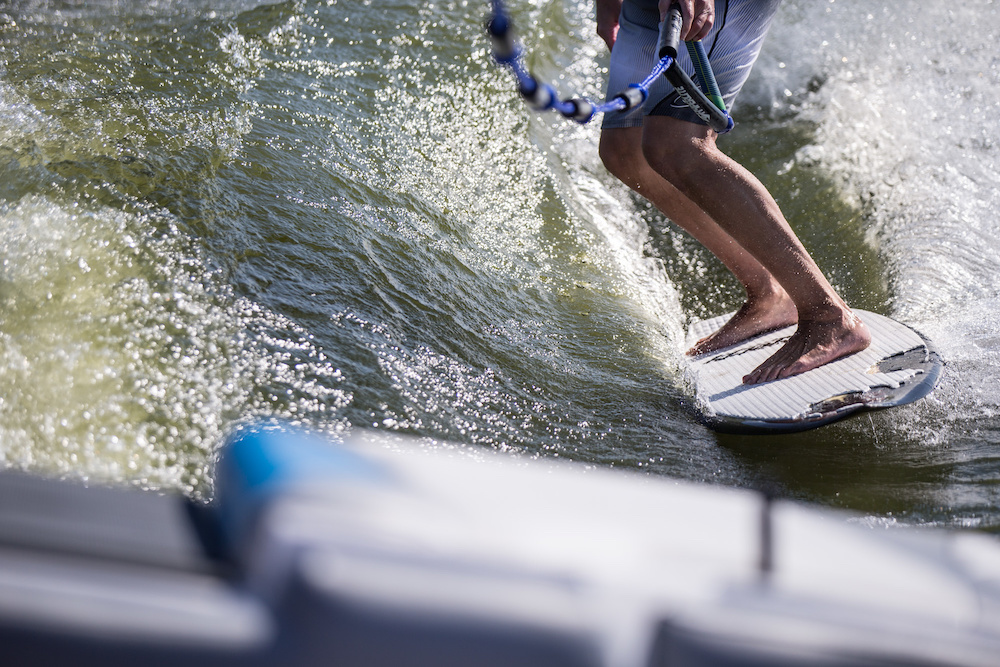
4 Wakesurfing Safety Guidelines to Follow
Wakesurfing happens close to the transom (aka, the back of the boat) and, as such, requires a boat that positions the prop well under the hull and away from the rider should they fall. Inboards, V-drives, and jet boats fit the bill, as do models featuring sterndrives with forward-mounted propellers.
Traditional sterndrives and outboards, however, locate the propeller too close to the surfer and should never be used for surfing. Wakesurf-oriented boat models also typically feature an exhaust system that keeps harmful carbon monoxide from building up in the surfer’s prime riding area.
Here are a few safety tips to keep in mind when wake-surfing:
- Invest in a wake surf-specific towrope. Its shorter length positions the surfer in the wake’s sweet spot, while the small handle, or a simple braided grip, lessens the chance of entanglement in a fall.
- Never wrap a slack line around your hand or arm when maneuvering the board into the wave’s pocket.
- Always be aware of the effect of wakes on the surrounding environment. In surfing mode, boats create far larger-than-average wakes. Should you ride too close to shore or other boaters, those wakes can cause damage.
- Always be respectful of both other boaters and waterfront property owners.
Read Next: Boating Safety Guide
This article and video are sponsored by Progressive Insurance®

